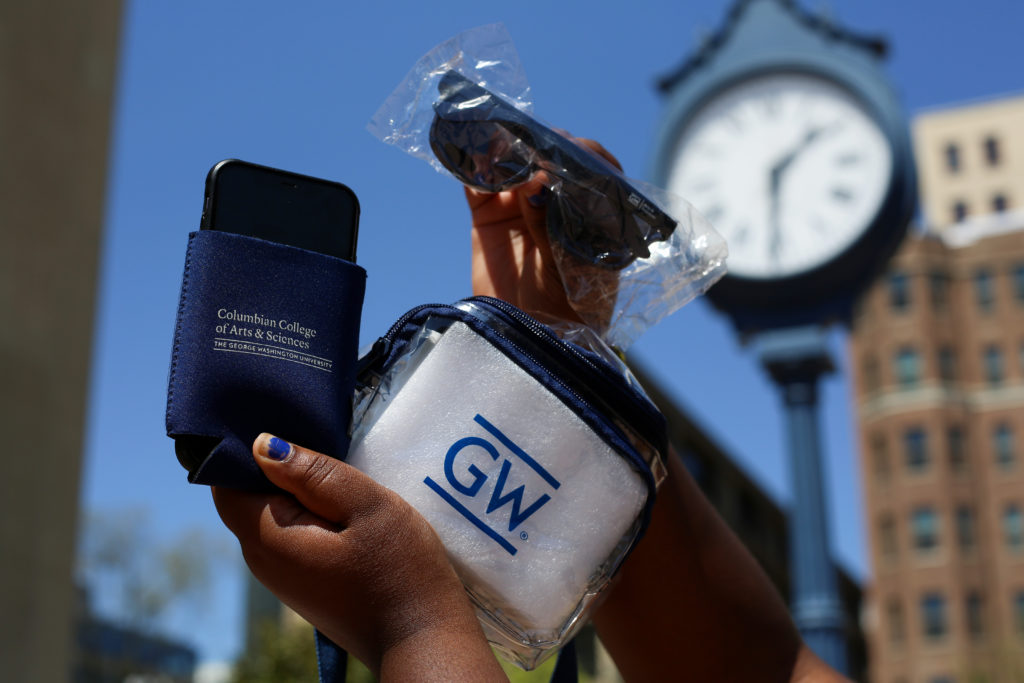Officials said the Division of Development and Alumni Relations hired a team of students this semester to create personalized video messages in emails and social media posts in hopes of bolstering alumni donations.
Patty Carocci, the associate vice president of alumni relations and annual giving, said Development and Alumni Relations officials employed 10 student marketing and communications specialists at the beginning of the semester to create videos for social media and emails pushing community members to donate to GW. Experts in alumni relations said GW is among the first universities in the country to have students create video content to garner alumni donations.
“Very few universities have an engagement center that has a video-first strategy, and we are excited to see where the program goes,” Carocci said in an email.
Carocci said student marketing and communications specialists worked up to 20 hours per week to film “hundreds” of videos for Giving Day earlier this month. She said the student employees film videos on the GW programs they are “passionate” about and post them for potential donors on the University’s social media platforms and in targeted messages sent to “relevant” alumni email lists.
Carocci said alumni responses to the student-made videos were “positive,” and the strategy makes Development and Alumni Relations “excited” for the future of the program.
She said the center’s first “big” project was centered around Giving Day, a 24-hour period between April 4 to April 5 where officials encourage GW community members to donate to the University. The student employees filmed and posted about 10 roughly 30-second videos on Twitter of themselves around campus, talking about how donors can choose where their money goes. The most-viewed tweet received more than 6,000 views.
Officials racked up more than $1.2 million dollars in Giving Day donations, about $400,000 below last year’s donation total. A record-high 3,193 donors gave this year, nearly 700 more donors than last year.
Carocci said after Giving Day, the center will continue to contact alumni through phone calls, emails and texts and will serve as ambassadors of the University at alumni events.
“All alumni were at one point students, so by connecting alumni more with current student life, we’re hoping that they can feel more connected to GW and engage further in more meaningful ways,” she said.
Daniel Burgner, the executive director of annual giving in the Office of Alumni Relations, said the initial job posting in December for the 10 available student positions received more than 100 applicants. He said officials hired students from a variety of programs to reflect the University’s academic “diversity.”
“Students are the heart of GW, and we wanted to better capture their voices to share with alumni,” Burgner said in an email.
Experts in higher education alumni engagement said student-run alumni giving campaigns will generate more donations than traditional forms of outreach like cold calling because it allows alumni to directly see the students, programs and initiatives their money is benefiting.
Lori Hurvitz, the associate vice president of alumni relations at Tulane University, said letting students take control of alumni giving campaigns is “innovative” in the higher education industry, where many universities have yet to employ similar strategies. She said universities nationwide stick to traditional fundraising methods, like cold calling, which no longer work because alumni are less receptive to phone calls.
“Now that people are becoming less tied to home and less tied to phones, putting content out in other mediums is a great way to connect with alumni when the old systems aren’t working,” Hurvitz said.
She said alumni “love” hearing about the student experience, and the giving campaign emphasizes that their relationships with the University do not end when they graduate. She said she hopes all students will learn that they should donate once they graduate.
“I think this educates students about the importance of alumni engagement and giving, and so when they graduate, they become better ambassadors for that,” Hurvitz said.
Dave Schueler, the senior vice president for alumni engagement at the University of Michigan, said GW’s strategy of employing students is effective because it establishes a “direct” connection between alumni and the University.
Schueler said universities, including the University of Michigan and GW, have programs that connect students with alumni for career support. GW’s Industry Career Network connects students with alumni based on areas of interest like finance and healthcare.
“There’s so many alumni that are looking for ways to stay connected or give back in some capacity,” Schueler said. “We’ve seen interest on the part of alumni participating in those programs because they just feel there’s a direct connection back to campus.”








